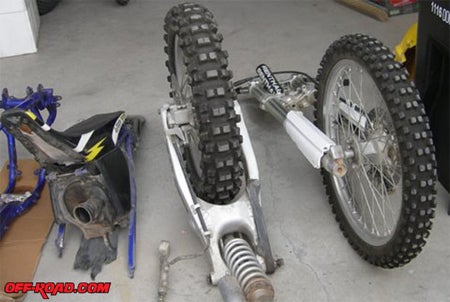 |
| Read more on Project 2-4, Part 1 |
For the rather low sum of $225, we were able to get a 1979 Suzuki RM 250 motor, and pipe, in good running condition. We took the motor apart, which is rather easy to do on a two-stroke, and the cylinder looked in good shape. The motor had a stator in it, but it did not have any of the other electrics.
A quick visit to eBay got the missing CDI and coil. The cost for the coil was under 20 bucks and a CDI was about $15. We put everything together once it was received (on a workbench) and lo and behold, we actually had spark.
Our first step was to clean the motor and get the old crud and grit off of all of the little crevices. After the motor was cleaned completely, we hit it with a shot of low-gloss engine enamel. This stuff is not quite flat black and looks pretty good on the motor. When we got done with the paint, the motor looked almost brand-new.
We then turned our attention to actually fabricating motor mounts for the engine and locating the engine in the proper position in the frame. To help us in figuring out exactly where it had to go, we placed the frame on a workbench, and use little one-inch-by-half-inch blocks of wood all under and around the motor to get a good position.
The swingarm and rear wheel complete was bolted into place to give us a reference point for our lineups. The rear sprocket was in place on the YZ rolling chassis and we simply had to line up the countershaft sprocket on the Suzuki motor with the rear sprocket on the YZ to get a starting point.
Here's how we did it:

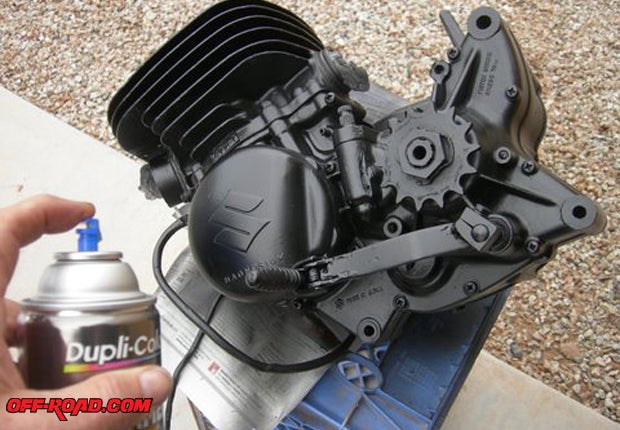
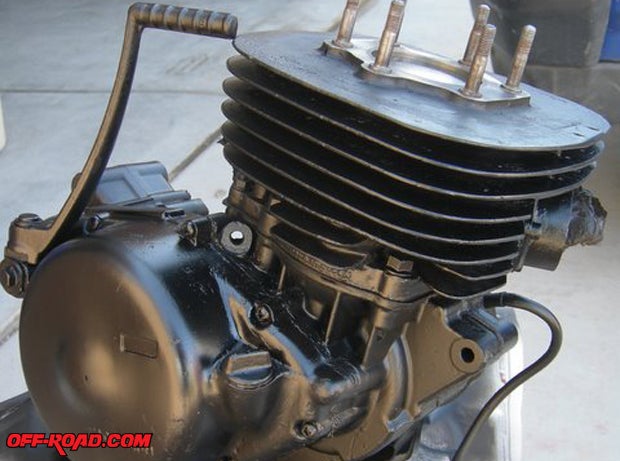
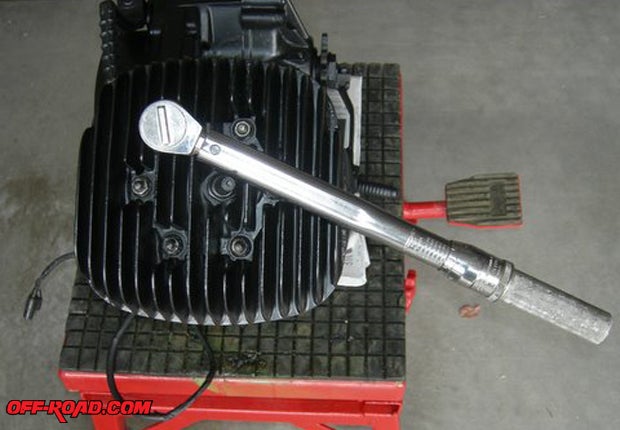
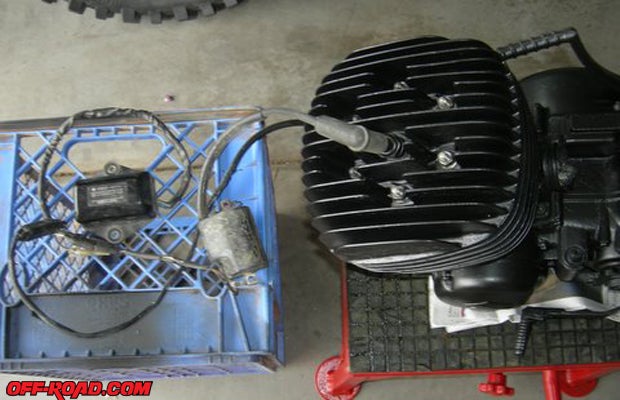
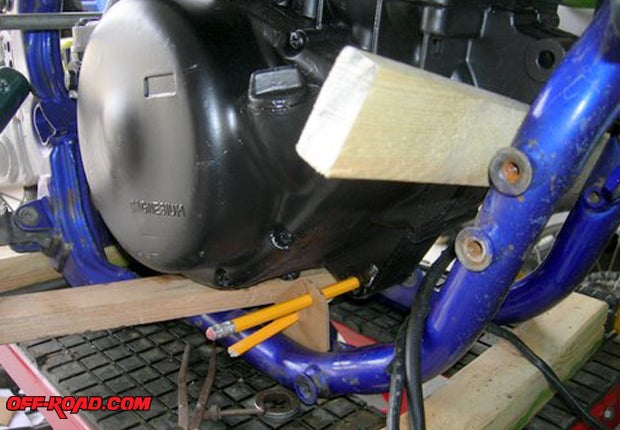
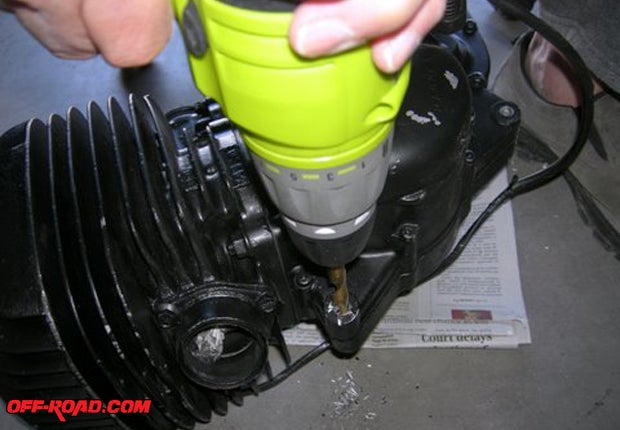
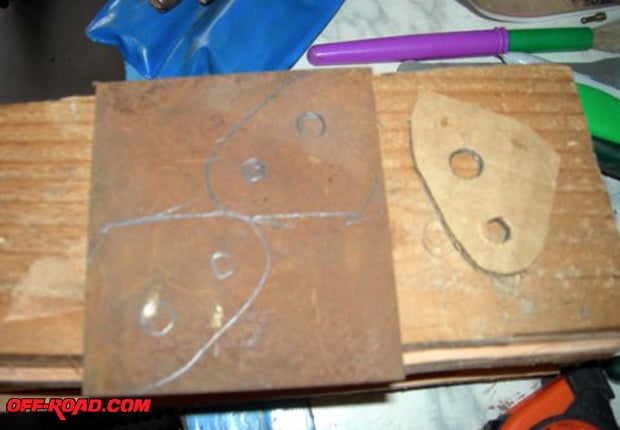
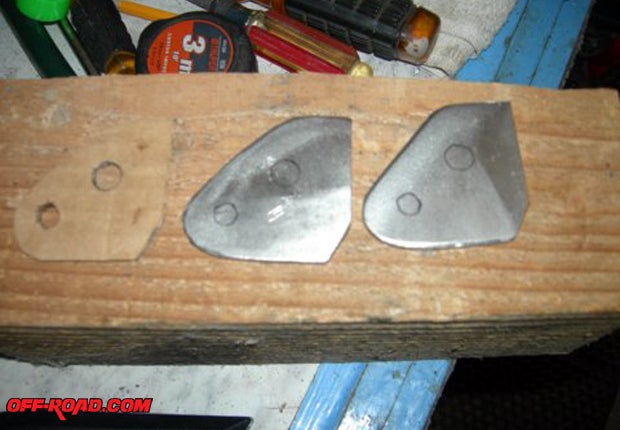
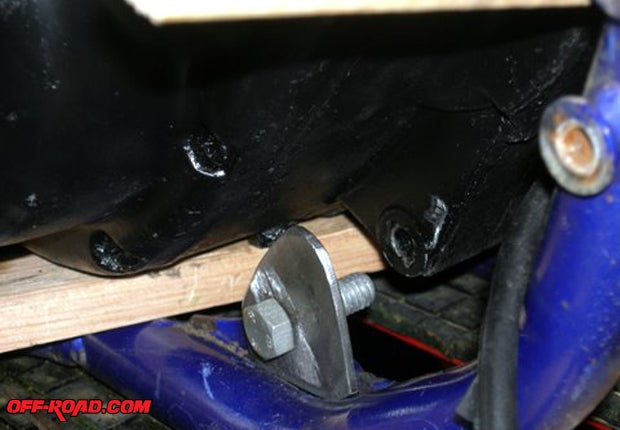
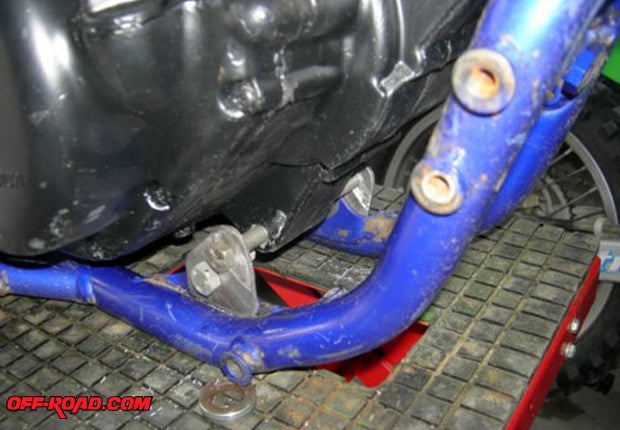
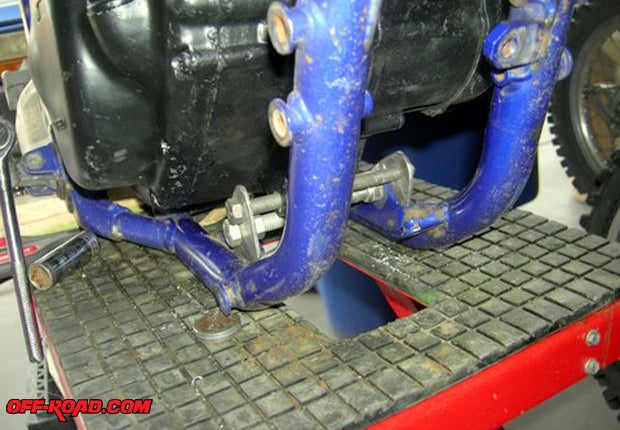
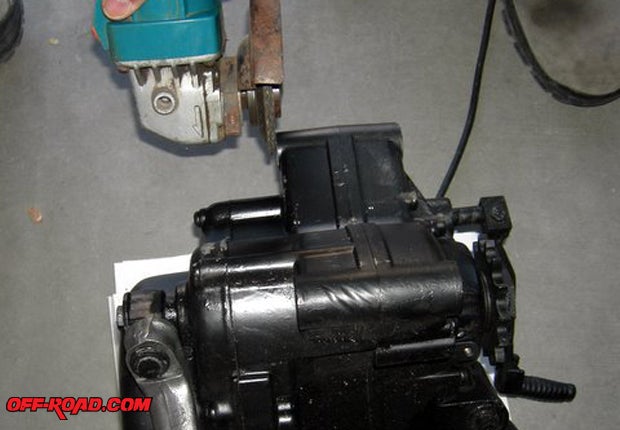
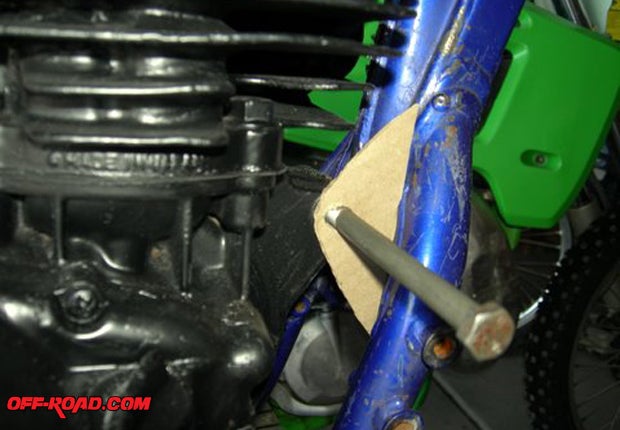
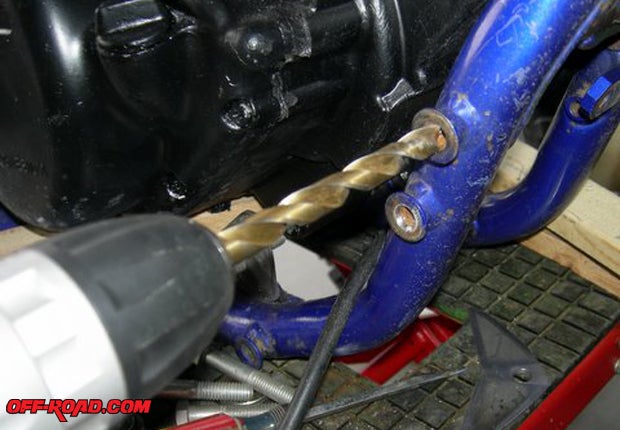
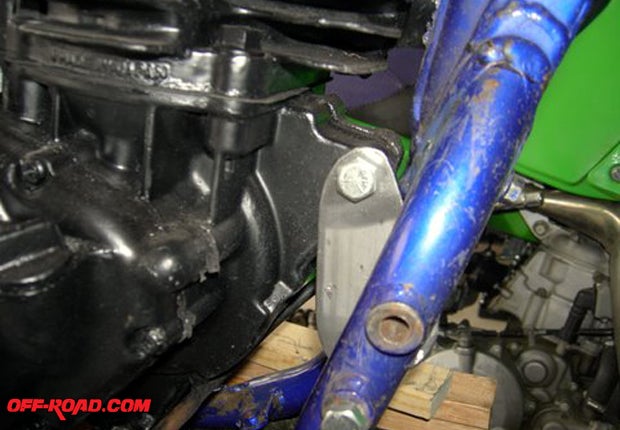
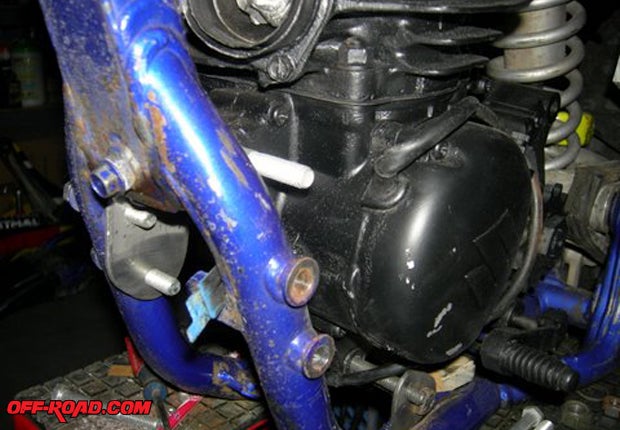
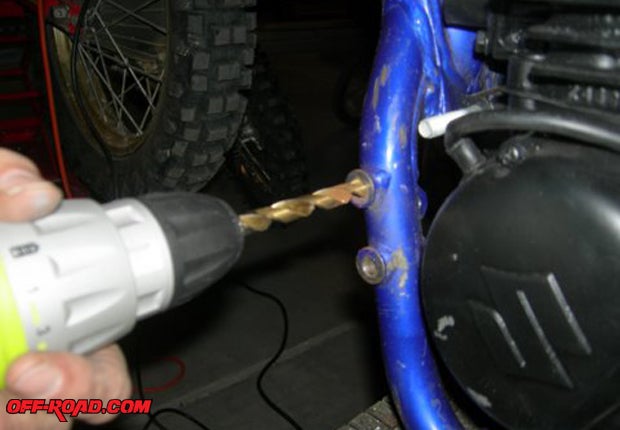
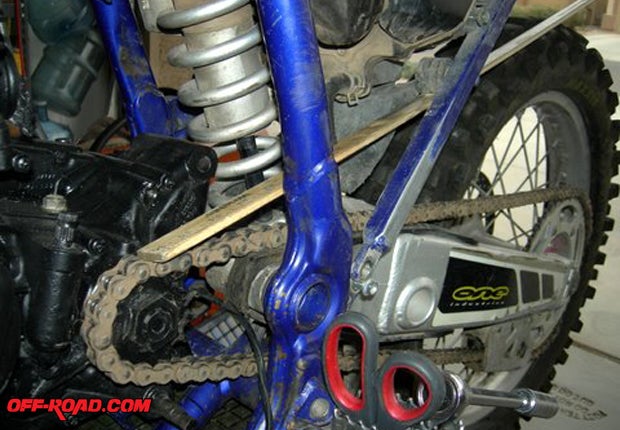
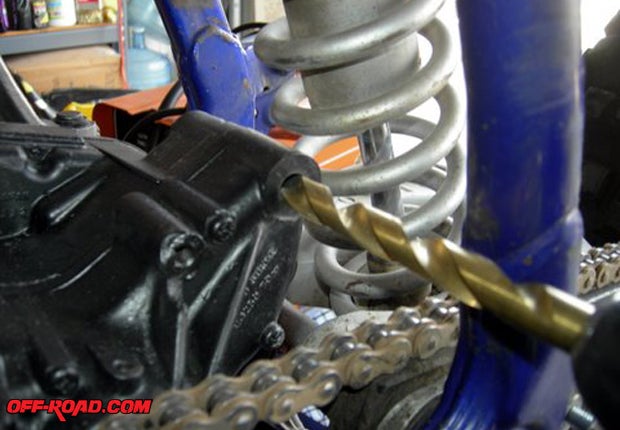
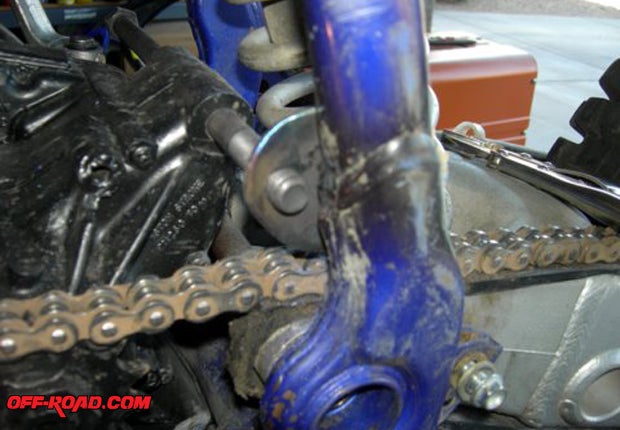
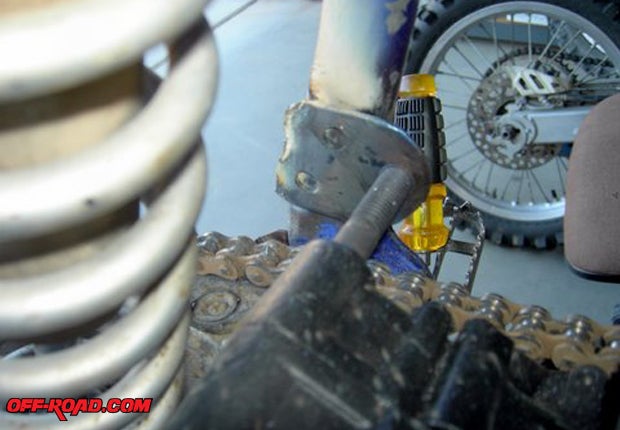
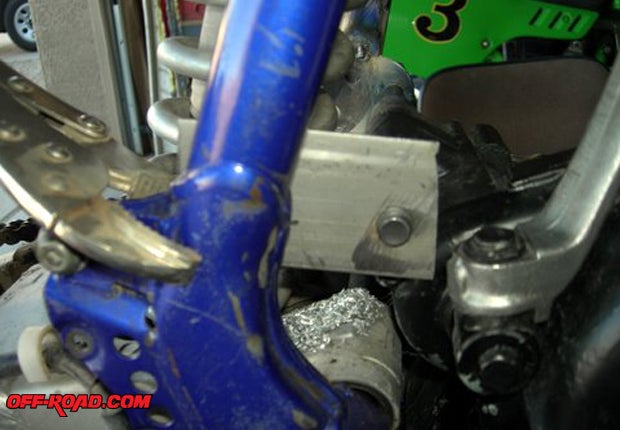
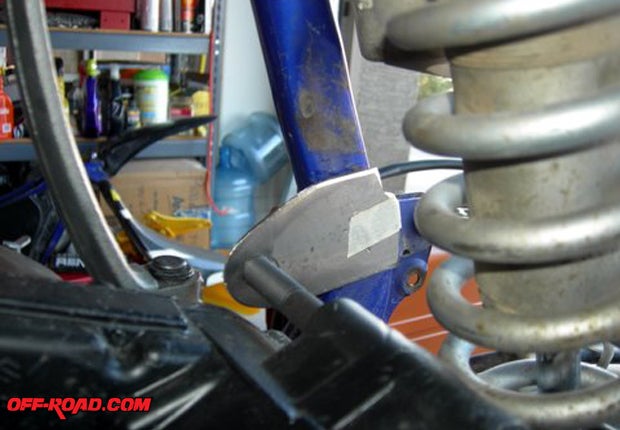
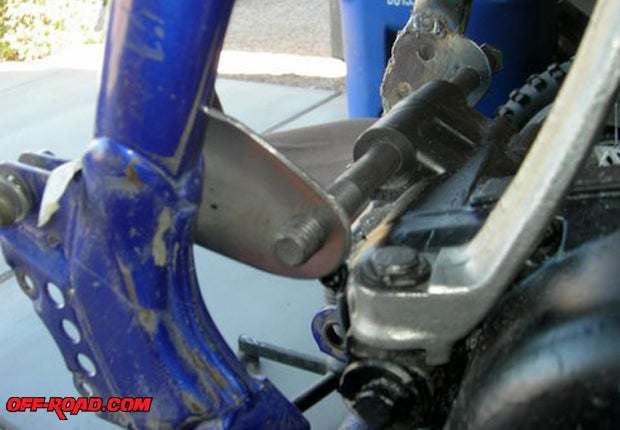
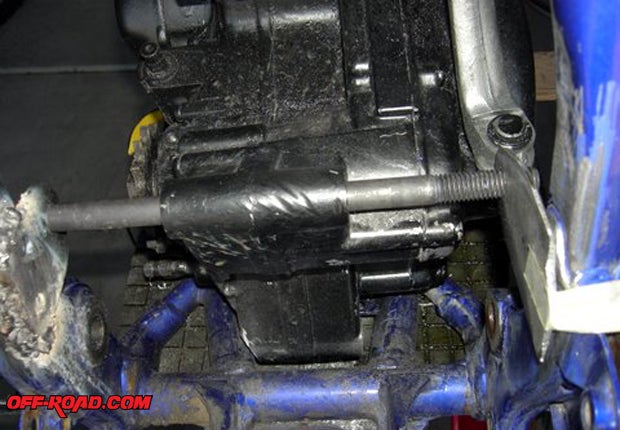
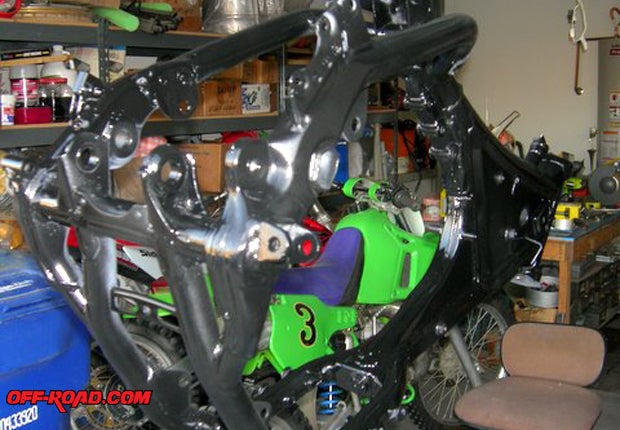
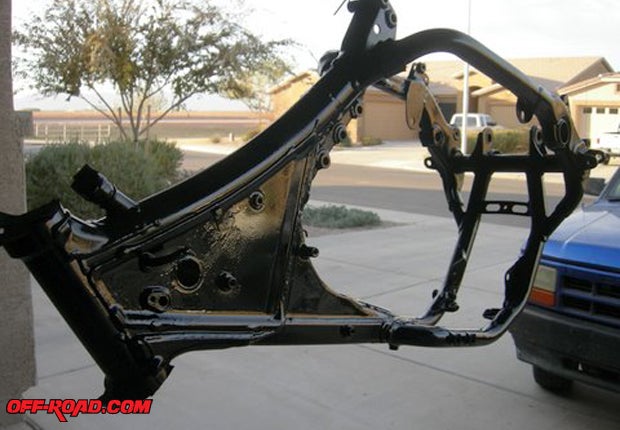
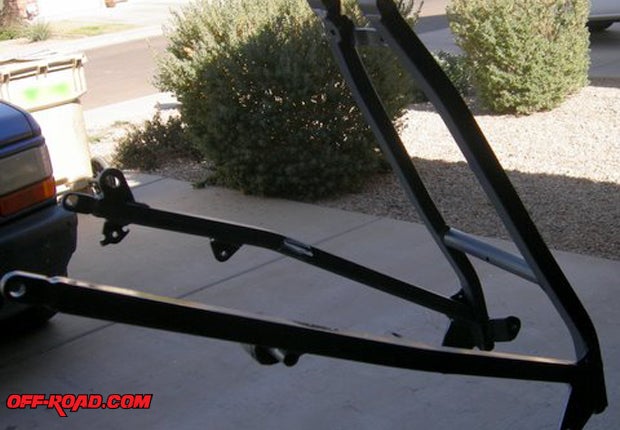
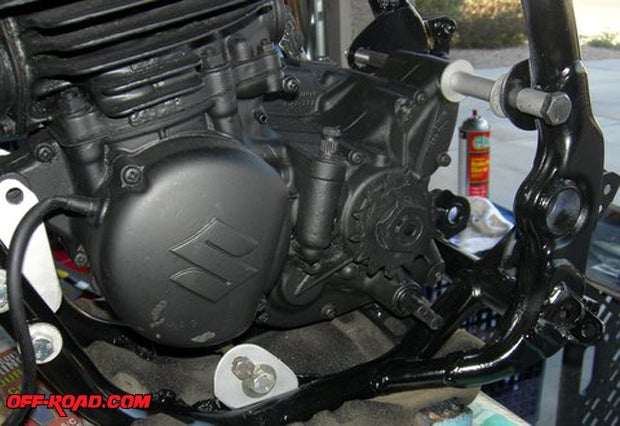

 Your Privacy Choices
Your Privacy Choices